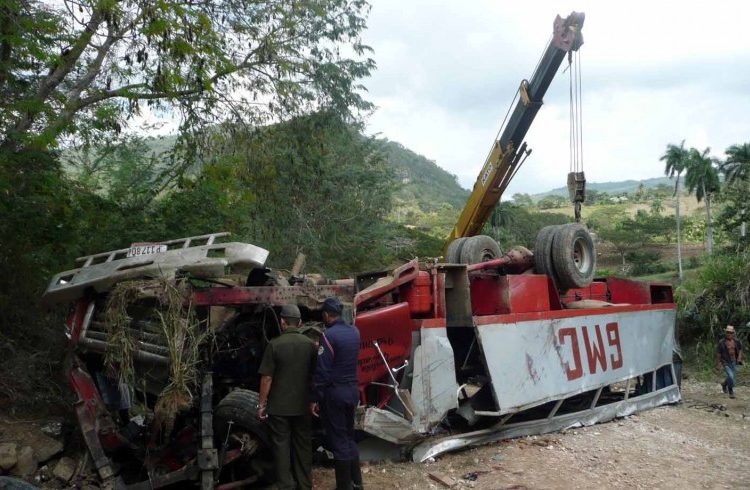The 56,605 traffic accidents that took place in Cuba in the last five years left a toll of 3,696 deaths and losses estimated at 2.5 billion Cuban pesos (some 100 million dollars). The latest data represents between 1 and 5 percent of the island’s GDP, the island’s state-run media reported.
According to the head of department of the National Traffic Division (DNT), Lieutenant Colonel Yuniel de la Rosa, more than 42,100 persons were wounded in these accidents.
The little perception of danger by the population, the technical limitations and safety of Cuba’s old automotive park, and the bad state and deficient signposting on the highways are the principal risk factors, De la Rosa indicated.
A report presented this month to the parliamentary commission of Attention to Services and National Defense revealed that 76 percent of Cuban highways are in a “regular to bad” technical state.
In relation to the reasons that most influence the mortal traffic accidents, the DNT officer pointed to speeding, driving under the influence of alcoholic beverages and the presence of stray animals on the road.
The lieutenant colonel commented that these data confirm that the results in the battle against accidents in Cuba – although they are not among the most unfavorable in the world -, are not at the level of those achieved in other activities directed at protecting person’s lives, like healthcare services, citizen safety and facing natural disasters.
De la Rosa explained that measures have been applied to reduce these numbers, among them adjustments and improvements in the signposting. He said that the crosswalks were repainted and “where possible” the median strips were expanded from 50 centimeters to a meter, which increases the safety zone.
In addition, there are more controls of the motorcycles and motorbikes which include demanding the use of the helmet and measures against excess passengers.
In Cuba, where transportation is one of the population’s most pressing problems, it is frequent to see three persons traveling on a motorcycle and more than five in the automobiles.
According to De la Rosa, greater emphasis is currently been put on the technical inspection of vehicles and those for passenger transportation are rigorously controlled.
In relation to the stray animals on the road, the police authorities are demanding – in coordination with the Ministry of Agriculture – greater control and care by the owners, as well as the good sate of the perimeter fences and the prohibition of circulating on the principal roads.
The speed limits have decreased in some of the streets of Havana and other cities in the country and vigilance and patrolling has been strengthened with the incorporation of technical means, the DNT officer specified.
Actions against drivers who “circulate under the influence of alcoholic beverages” have been increased and work is underway to achieve an improvement in the road safety education and making public these and other topics.
Official data for 2016 and made known last May, set the death rate due to traffic accidents in Cuba at 6.87 per 100,000 inhabitants.
Accidents are the fifth cause of death on the island and the first in the age group of between 15 and 29 years.
EFE / OnCuba










